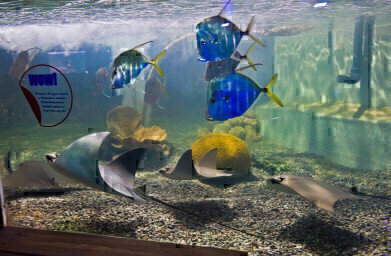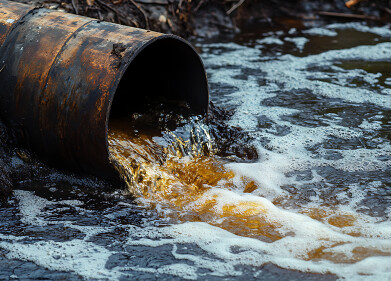Water quality monitoring
Water Quality is Top Priority at Brighton Aquarium
Jun 26 2012
The SEA LIFE Centre next to the pier in Brighton is the world’s oldest operating aquarium. Originally designed by Eugenius Birch in 1872, the popular attraction has recently benefited from substantial renovation and now offers a range of new attractions including a Jellyfish Discovery & a Behind the Scenes tour.
With hundreds of highly valuable marine creatures to protect, water quality is a key issue and routine monitoring is now undertaken with HACH LANGE instruments (Germany). Displays Curator Carey Duckhouse says “The recent building work presented a series of challenges, but we have been able to protect water quality throughout the project with a monitoring regime that was designed to quickly detect any deterioration in water quality and to provide the highest level of vigilance for the most sensitive species.”
In order to protect water quality, each tank at the Brighton attraction has its own filtration system, including a pressurised sand filter, a biological filter and a carbon filter where appropriate. Some tanks, containing particularly sensitive species such as seahorses, octopus and jellyfish, also feature an ultraviolet treatment system.
Many marine organisms will die quickly if the dissolved oxygen (DO), temperature or salinity levels move outside of acceptable boundaries, so temperature measurements are taken daily on all tanks, DO is measured three times/day in the main ocean tank, and salinity and DO are measured twice per week in all tanks. A hand-held ‘HQD’ water quality meter is employed for this purpose, utilising the latest sensor technology such as an optical LDO™ sensor which substantially improves the reliability of oxygen measurements. However, as Carey explains “Even subtle changes in water quality can stress marine organisms, which makes them more sensitive to disease, so a range of other parameters such as ammonia, nitrate, nitrite, phosphate, copper and iron, are also measured with a HACH LANGE DR 2800 spectrophotometer.”
Reagents for the spectrophotometer tests are supplied in small pre-filled powder pillows containing extremely accurate amounts of reagents. This ensures that the tests are conducted in the same way every time and avoids potential errors whilst also saving time and chemical wastage.
The spectrophotometer has an internal memory containing the calibration data for a large number of parameters so that Carey and her colleagues simply choose the pillow reagents for the tests they need.
The test procedure is very simple; the contents of a powered pillow are simply added to a small sample and a coloured solution is allowed to develop for a specific time. The sample tube is then inserted into the spectrophotometer which provides a highly accurate and repeatable reading.
The water quality monitoring equipment is also used in research conducted in collaboration with Sussex University. Much of this work is with Cephalopods such as cuttle fish and addresses a range of issues including feeding behaviour, camouflage and nutrition. Accurate water quality monitoring is necessary in all of this work to ensure that observed effects are not the result of water quality changes. Visitors to the aquarium can view research work during the ‘Behind the Scenes’ tour, in addition to the nursery area, the laboratory and the food preparation section.
Digital Edition
IET 35.1 Jan 2025
February 2025
Gas Detection - Use of innovative NDIR gas analysis for monitoring industrial gas mixing equipment Environmental Laboratory - Chromatography provides key insights for sustainable fuel deve...
View all digital editions
Events
Mar 11 2025 Amsterdam, Netherlands
Mar 12 2025 Montreal, Canada
Mar 18 2025 Expo Santa Fe, Mexico
Mar 18 2025 Moscow, Russia
Mar 19 2025 Manila, Philippines








.jpg)










